Have you ever considered the significance of a prayer candle?
Well, we’re here to shed some light on this beautiful and meaningful tradition.
Prayer candles, also known as votive candles, have a deep historical significance and are used by many cultures and religions around the world.
These candles are not your ordinary candles; they carry a powerful symbolism and hold a special place in the hearts of those who seek solace and guidance through prayer.
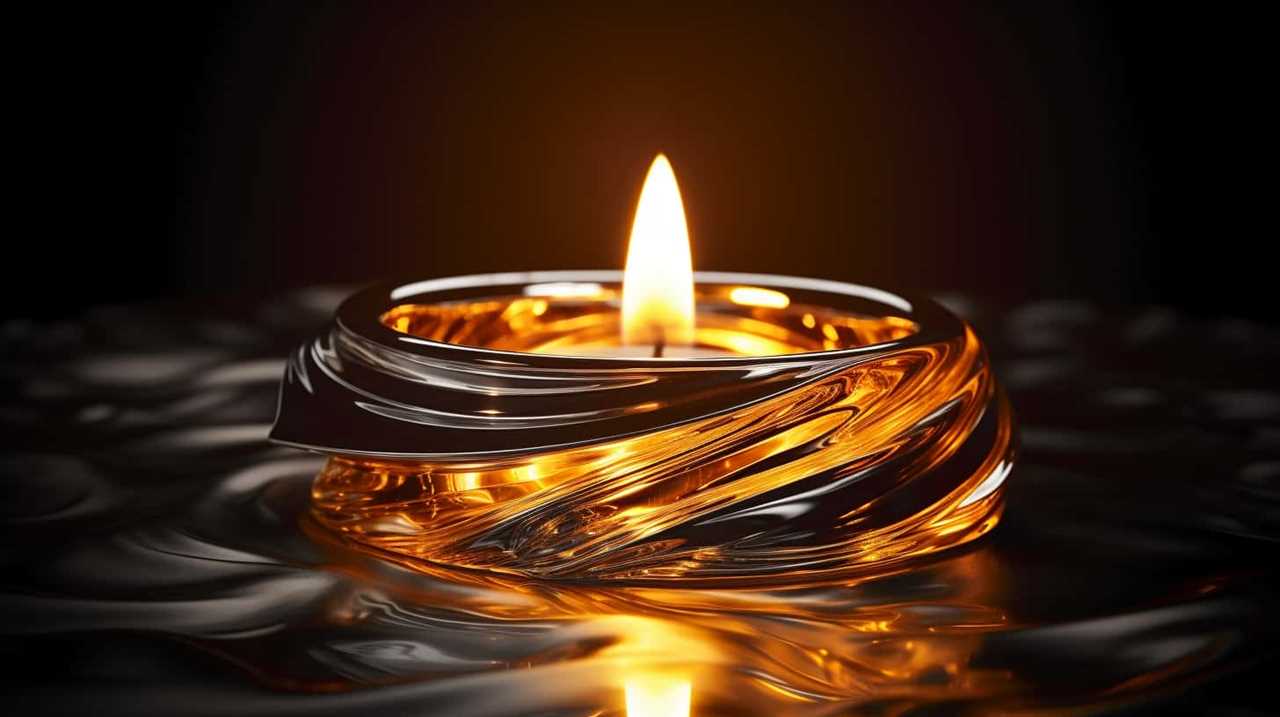
From Christianity to other religious traditions, prayer candles have been used to symbolize hope, faith, and spiritual connection.
Join us as we explore the origins, types, and modern uses of prayer candles, and discover the power they hold in serving others.
Key Takeaways
- Prayer candles have a deep historical significance and have been used in religious rituals and ceremonies since ancient civilizations.
- They symbolize hope, faith, and spiritual connection.
- Lighting a candle creates a sacred space and invites spiritual energy.
- Prayer candles hold deep-rooted connections within spiritual practices and are an integral part of cultural and religious traditions.
Origin and Historical Significance
The origin and historical significance of prayer candles can be traced back to ancient civilizations, where they were used in religious rituals and ceremonies. These candles hold deep symbolic meaning and serve as a physical representation of prayers and intentions.
Throughout history, prayer candles have been used in various religious traditions, including Christianity, Judaism, and Buddhism. They’re believed to bring light and spiritual guidance, creating a sacred space for individuals to connect with the divine.
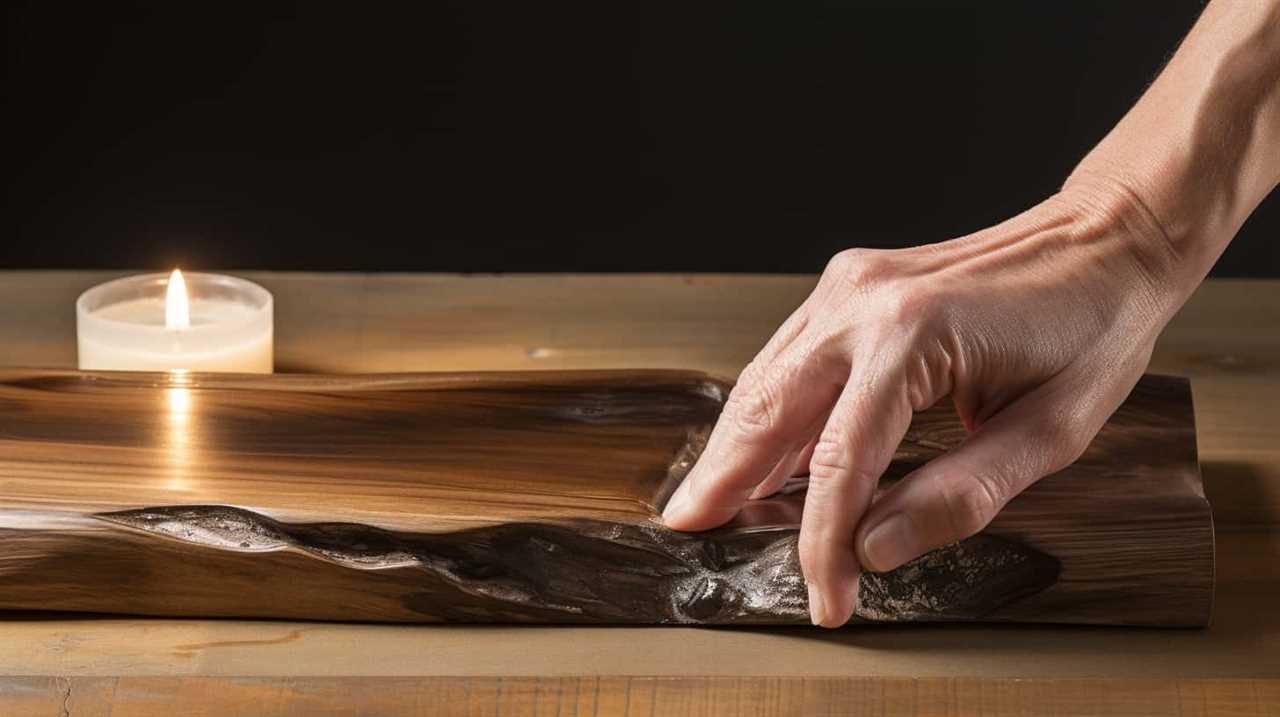
The act of lighting a prayer candle is seen as a way to offer devotion, seek solace, and express gratitude. The historical significance of prayer candles lies in their ability to foster a sense of spirituality and provide comfort to those who seek it.
These candles have stood the test of time, remaining a powerful tool for serving others in their spiritual journey.
Symbolism and Meaning
When examining the symbolism and meaning of prayer candles, it’s important to consider their spiritual significance, role in religious rituals, and cultural interpretations and practices.
Prayer candles are often seen as a physical representation of the divine presence and a way to connect with the spiritual realm. They’re used in various religious traditions to symbolize devotion, hope, and prayer, serving as a visual reminder of one’s intentions and desires.

Additionally, different cultures may have their own interpretations and customs surrounding the use of prayer candles, adding depth and richness to their symbolism.
Spiritual Significance of Candles
We find that candles hold a deep spiritual significance, as they symbolize and carry meaning in various religious and spiritual practices. Candles are often used as a form of prayer or meditation, representing the presence of the divine or the light of God.
In many spiritual traditions, lighting a candle is a way to create a sacred space and invite spiritual energy into one’s surroundings. The flickering flame of a candle can also serve as a metaphor for the human soul, illuminating the darkness and guiding us on our spiritual journey.
Additionally, candles are used in religious customs such as ceremonies, rituals, and worship services. They play a significant role in symbolizing purity, enlightenment, and the connection between the physical and spiritual realms.
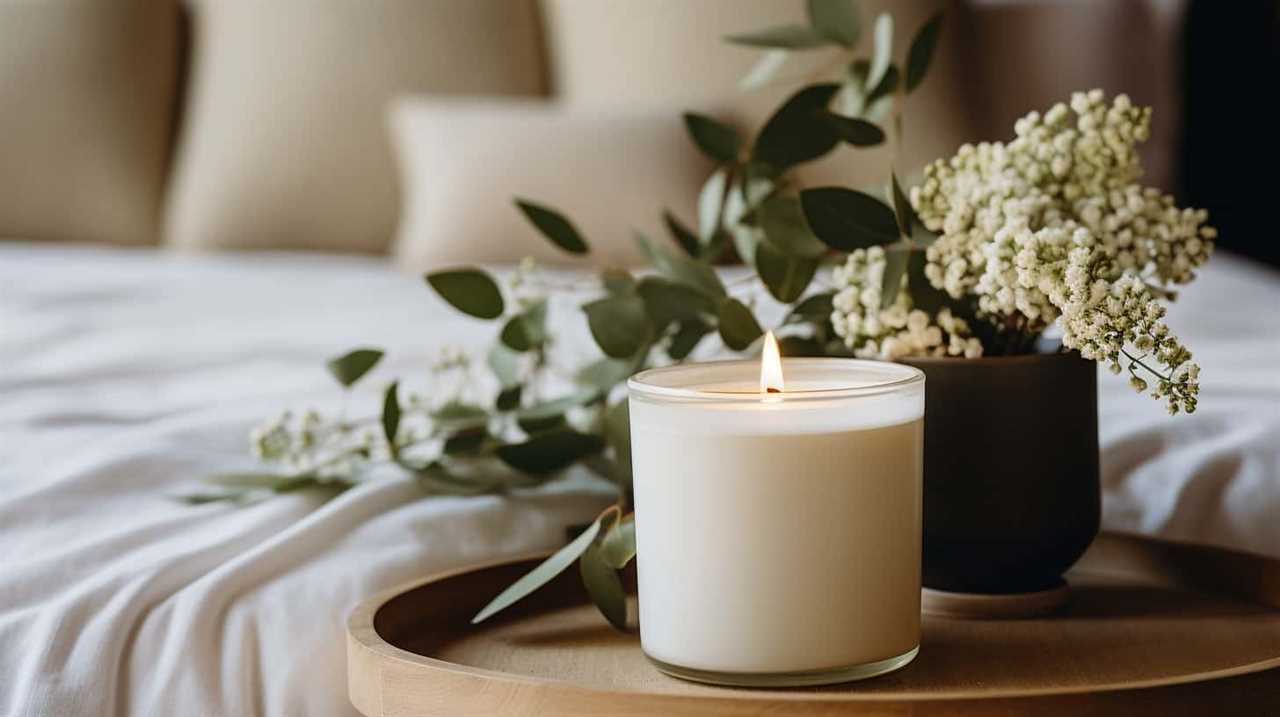
Now, let’s explore the specific role that candles play in religious rituals.
Role in Religious Rituals
Candles play an integral role in religious rituals, symbolizing spiritual connection and serving as a source of divine illumination. Their significance in ceremonies and their role in worship can’t be overstated.
Here are two sub-lists that delve into the deeper meaning and purpose of candles in religious rituals:
- Symbolic Significance:
- Candles represent the presence of the divine, providing a tangible symbol of the spiritual realm.
- They serve as a visual reminder of the light of God, illuminating the path of believers and guiding them towards enlightenment.
- Practical Significance:
- Candles create a sacred atmosphere, enhancing the sense of reverence and devotion during worship.
- They can also act as a focal point for meditation and prayer, helping individuals to center their thoughts and connect with the divine.
Understanding the role and significance of candles in religious rituals provides a foundation for exploring the cultural interpretations and practices associated with them.
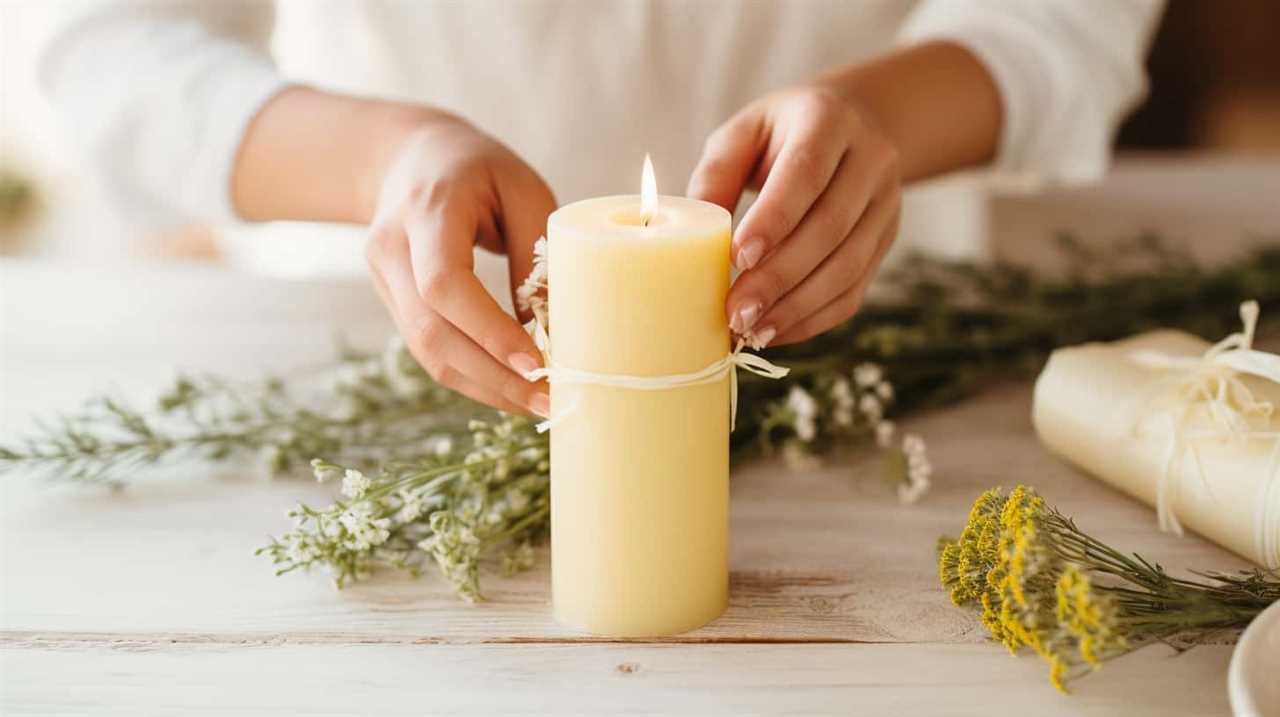
Cultural Interpretations and Practices
Continuing from the previous subtopic, it’s fascinating to explore the cultural interpretations and practices surrounding prayer candles, as they hold deep symbolism and meaning in various religious traditions.
Cultural practices related to prayer candles vary across different communities and faiths. In some cultures, lighting a prayer candle is seen as a physical representation of one’s intentions and desires. The act of lighting a candle is believed to create a sacred space and establish a connection between the individual and the divine.
Additionally, contemporary interpretations of prayer candles have expanded to include personal affirmations, healing intentions, and global peace. This highlights the evolving nature of cultural practices, as individuals incorporate their own beliefs and intentions into the act of lighting a prayer candle.
Transitioning into the next section, let’s now explore the different types and designs of prayer candles.

Types and Designs of Prayer Candles
There are various types and designs of prayer candles available for individuals to choose from. These candles come in different decorative designs, allowing individuals to select one that resonates with their personal taste and spiritual beliefs. From simple, plain candles to intricately adorned ones, the options are vast.
Additionally, prayer candles come in various sizes to cater to different needs. Some individuals may prefer smaller, more portable candles that can be easily carried or placed in tight spaces, while others may opt for larger candles that can burn for a longer duration. These different sizes ensure that individuals can find a candle that suits their specific requirements.
Understanding the types and designs of prayer candles is essential in recognizing their cultural and religious significance.
Cultural and Religious Significance
As we delve into the topic of cultural and religious significance, it’s important to explore the deep-rooted connections that prayer candles hold within various spiritual practices. Prayer candles have been an integral part of cultural practices and religious rituals for centuries. They symbolize the act of prayer and serve as a physical representation of the intentions and desires of the individual or community.
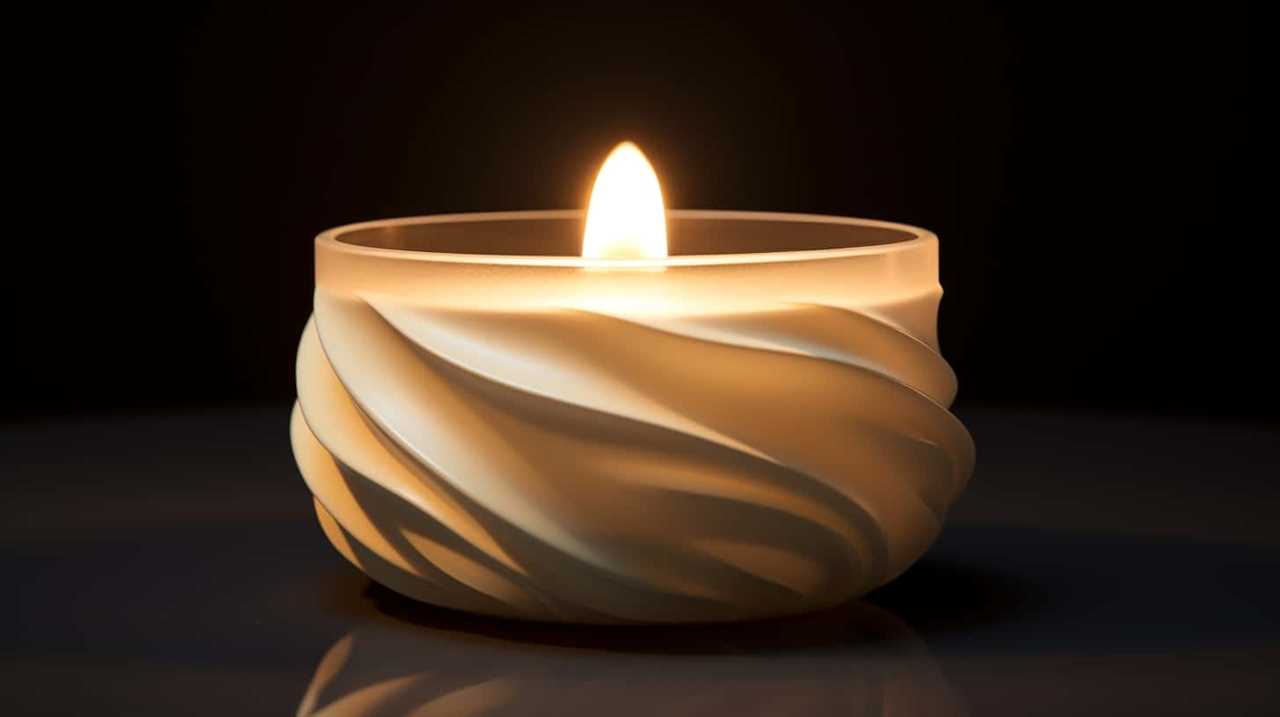
Lighting a prayer candle is a way to create a sacred space and invite the divine presence into one’s life. In many cultural practices, the act of lighting a candle is seen as a form of communication with the divine, a way to seek guidance and protection. Similarly, in religious rituals, prayer candles are used to honor saints, offer prayers for loved ones, and seek intercession. Their presence in these practices signifies devotion, hope, and the connection between the earthly and the spiritual realms.
Transitioning into the subsequent section, let’s now explore how prayer candles are used in Christianity.
How Prayer Candles Are Used in Christianity
When it comes to Christianity, prayer candles hold deep symbolism and significance.
Lighting a prayer candle is a common practice among Christians, representing a physical manifestation of their prayers and intentions.

The act of lighting a candle is seen as a way to communicate with God, seeking guidance, protection, and spiritual connection.
Christian Prayer Candle Symbolism
In Christianity, prayer candles are commonly used to symbolize the act of prayer and serve as a visual representation of our collective devotion and intercession. The rituals surrounding Christian prayer candles hold great significance, as they provide a tangible way for believers to express their faith and seek divine guidance.
The lighting of a prayer candle holds deep meaning, representing the illumination of Christ’s presence in our lives and the light of hope that we find in our prayers. It’s a physical reminder of our connection to God and a way to offer our intentions and supplications. The flickering flame also serves as a symbol of the Holy Spirit, guiding and illuminating our prayers as they rise to heaven.
Through the lighting of prayer candles, Christians engage in a sacred act of worship, inviting God’s presence and seeking His grace and mercy.

Significance of Christian Prayer Candle Rituals:
- Expresses devotion and intercession
- Symbolizes the illumination of Christ’s presence and the light of hope
Significance of Candle Lighting:
- Represents the connection to God
- Symbolizes the guidance and illumination of the Holy Spirit
Significance of Lighting
By lighting prayer candles, we actively engage in the sacred act of worship and seek God’s presence and guidance.
The history of lighting candles as part of religious rituals can be traced back to ancient times, where it symbolized the offering of light as a form of devotion and communication with the divine.
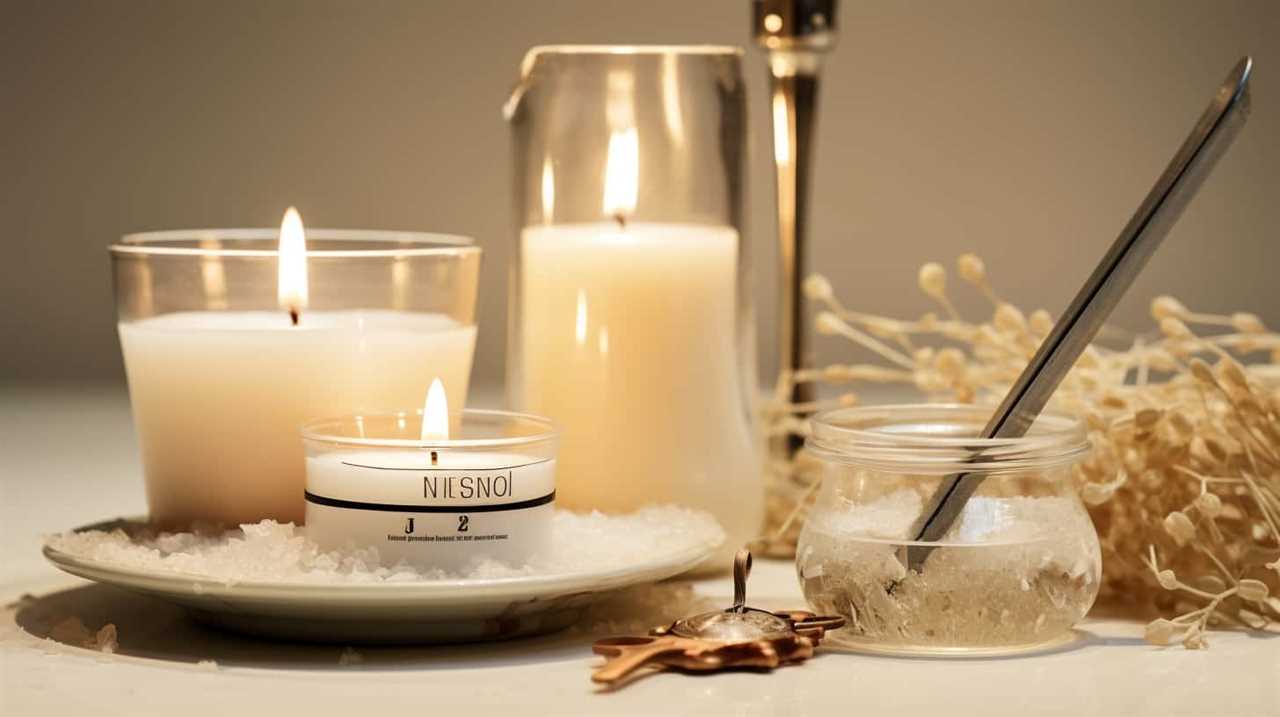
In Christianity, the act of lighting prayer candles holds significant spiritual and psychological effects. It serves as a physical representation of our prayers and intentions, allowing us to focus our thoughts and emotions towards God.
The flickering flame not only creates a serene and contemplative atmosphere, but it also symbolizes the presence of the Holy Spirit and the light of Christ illuminating our lives.
Lighting prayer candles helps to center our hearts and minds on God, inviting His transformative power and guidance into our lives.
Prayer Candles in Other Religious Traditions
Prayer candles are used for religious rituals and devotion in various traditions, including those of other religions. In Buddhism, prayer candles hold a significant role in offering prayers and expressing gratitude. They’re often used during meditation practices to create a sacred space and enhance spiritual connection.
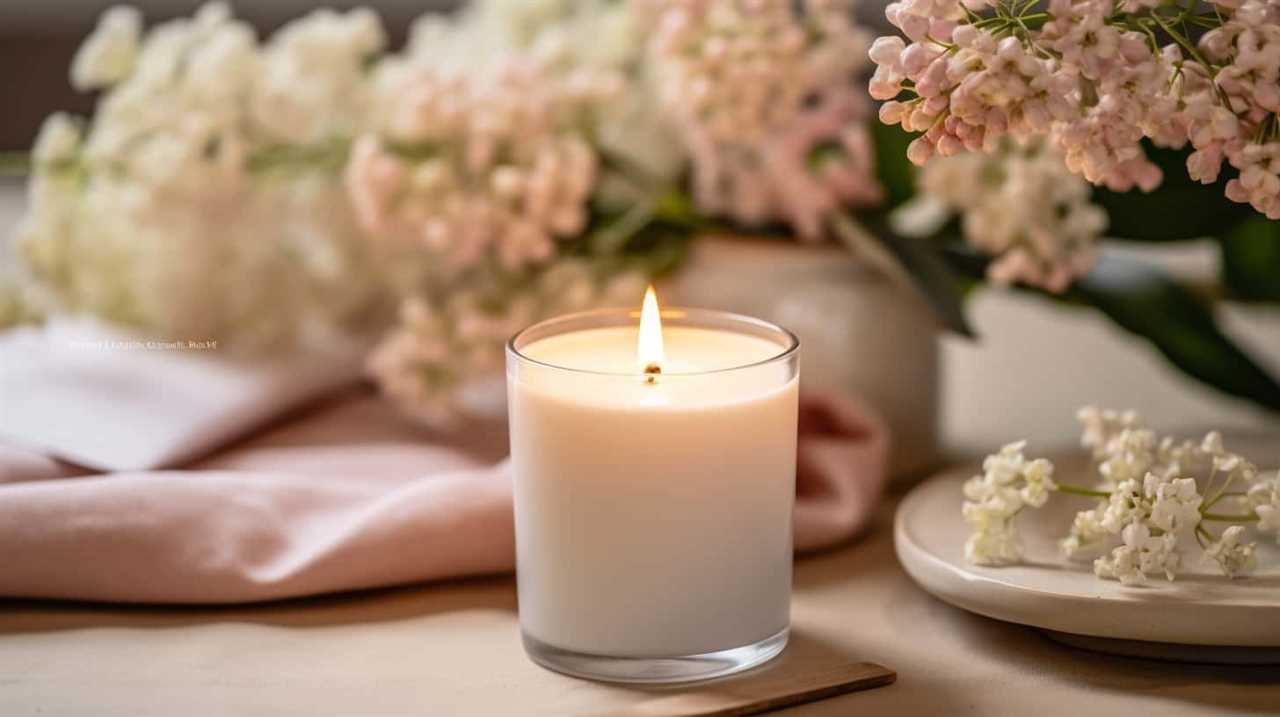
In Hinduism, prayer candles, known as diyas, are lit to symbolize the victory of light over darkness and to invoke blessings from deities. Diyas are commonly lit during religious ceremonies and festivals as a form of devotion and to bring positivity into the surroundings.
These practices demonstrate the universal nature of prayer candles and their ability to foster spiritual connection across different religious traditions. As we explore the modern uses and variations of prayer candles, it’s important to acknowledge the rich diversity of religious practices that incorporate these sacred objects.
Modern Uses and Variations of Prayer Candles
We have witnessed a shift in the uses and styles of prayer candles over time. In modern trends, prayer candles have become more diverse and versatile in their purpose.
While traditional prayer candles were primarily used for religious rituals and devotions, they’re now also used for meditation, mindfulness, and personal intentions. Additionally, there’s a wide range of decorative options available, allowing individuals to choose candles that reflect their personal style and preferences. These modern variations often incorporate symbols, images, and affirmations that hold personal significance for the individual.

The use of prayer candles as a form of self-expression and reflection has become increasingly popular, as people seek ways to connect with their spirituality in a meaningful and personalized manner. The evolving styles and uses of prayer candles reflect the changing needs and desires of individuals in their spiritual journey.
Frequently Asked Questions
Are Prayer Candles Only Used in Christianity?
Prayer candles are not only used in Christianity. They hold cultural significance in various non-Christian religions as well. These candles serve as a means of connecting with the divine, offering prayers, and seeking guidance and blessings.
Can Prayer Candles Be Used for Non-Religious Purposes?
Prayer candles can indeed be used for non-religious purposes, such as decoration or creating a peaceful ambiance. However, it is important to recognize the cultural significance of prayer candles and their origins in religious practices.
What Materials Are Prayer Candles Typically Made Of?
Prayer candle materials vary, but commonly include wax, glass, and a wick. The history of prayer candles dates back centuries, and they have been used in various religious and spiritual practices.
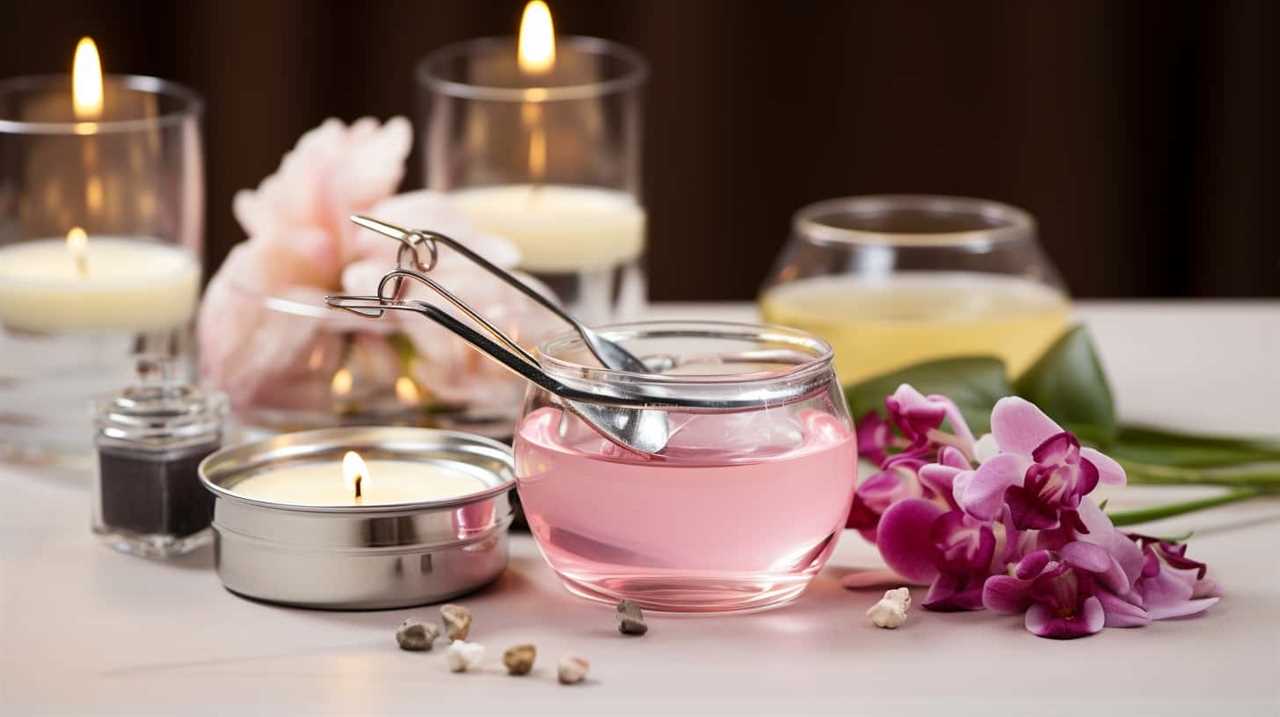
Are There Any Specific Colors Associated With Prayer Candles?
Different colors of prayer candles hold specific meanings in various religions. Understanding the history and significance of prayer candles allows us to serve others by providing them with candles that align with their spiritual beliefs and intentions.
Are There Any Specific Prayers or Rituals Associated With Lighting a Prayer Candle?
When lighting a prayer candle, specific prayers and rituals can be observed to enhance the spiritual experience. Different types of prayer candles hold varying meanings, and the act of lighting them can bring specific benefits to our prayers.
Conclusion
In conclusion, prayer candles hold a deep historical and cultural significance. They symbolize hope, faith, and spiritual connection across various religious traditions.
Like a flickering flame guiding us through the darkness, prayer candles serve as a tangible representation of our prayers and intentions. They illuminate our path towards divine presence, just as a lighthouse guides ships to safety.

Through their diverse designs and modern variations, prayer candles continue to play a vital role in our spiritual journeys.










